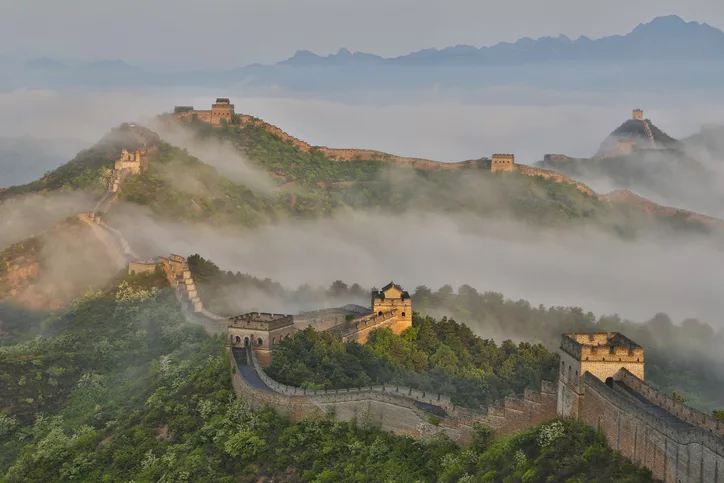The Great Wall of China stands as an enduring testament to human ingenuity, resilience, and determination. As one of the most iconic architectural marvels in history, it has earned its place as one of the Seven Wonders of the World. Spanning over 21 196 kilometres and traversing diverse landscapes, the Great Wall is an awe-inspiring feat of engineering that continues to captivate the imagination of people worldwide.

Fog along Great Wall China, Jinshanling. Picture: Getty Images
Construction of the Great Wall began as early as the 7th century BC, and it evolved over centuries through the hands of different dynasties. The most famous sections, such as Badaling and Mutianyu, were predominantly built during the Ming Dynasty (1368-1644 AD). Its primary purpose was to defend against invasions and protect ancient Chinese states from the northern nomadic tribes.
The Wall’s construction involved a colossal undertaking, with millions of labourers, including soldiers, convicts, and civilians, working tirelessly to create this massive fortification. The wall’s strategic location atop mountains and ridges ensured an elevated advantage, offering an unyielding defence against invaders. Along its length, watchtowers were erected to provide vantage points for surveillance and communication.
The Great Wall is not a single, continuous structure but rather a series of walls, trenches, and natural barriers, ingeniously linked together to form a cohesive defence network. It was meticulously planned to adapt to the geographical features of the land, with sections winding along ridges, spanning valleys, and even crossing rivers.
Throughout its history, the Wall underwent numerous expansions, renovations, and repairs. Remarkably, the methods used in its construction reflect advanced engineering and architectural prowess for the respective times. Materials such as bricks, stones, wood, and compacted earth were expertly utilized, showcasing the builders’ resourcefulness and skill.
Beyond its military significance, the Great Wall of China has profound cultural and symbolic importance for the Chinese people. It represents unity, strength, and resilience in the face of adversity. The Wall’s grandeur also highlights the ancient Chinese philosophy of harmony between man-made structures and nature, a belief that has greatly influenced Chinese art and culture.
In the modern era, the Great Wall has become one of the most visited and recognizable landmarks in the world, drawing millions of tourists annually. Visitors from all corners of the globe marvel at the immensity of this ancient structure and immerse themselves in the rich history that surrounds it.
However, the Great Wall has faced numerous challenges over the centuries, including natural erosion, human intervention, and inadequate preservation efforts. The Chinese government, in collaboration with international organizations, is actively working to preserve and protect this invaluable piece of world heritage for future generations.
As one of the Seven Wonders of the World, the Great Wall of China stands tall as a testament to human ambition, persistence, and the ability to leave a lasting legacy on the world stage. It is not merely a fortification of bricks and stones but a living testament to the rich history and cultural heritage of China – a symbol of its past and a beacon of hope for the future.
Follow us on social media for more travel news, inspiration, and guides. You can also tag us to be featured.
TikTok | Instagram | Facebook | Twitter
ALSO READ: The new 7 Wonders of the world
















